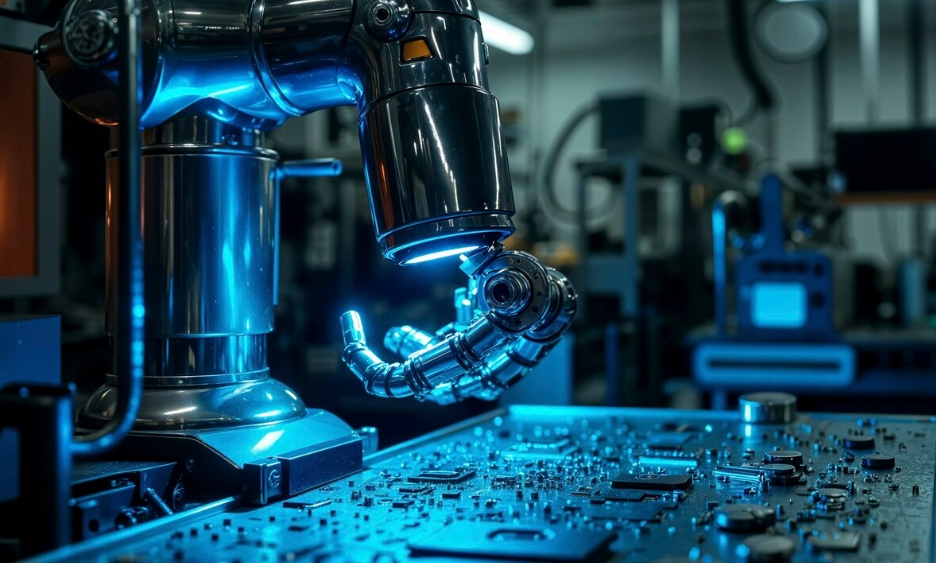Introduction
Wearable technology has evolved significantly over the past decade, transforming from simple fitness trackers into highly advanced devices integrated into our daily lives. The development of wearable tech has reshaped how we interact with the world, whether through fitness monitoring, enhanced communication, or immersive experiences. From the first pedometers to the cutting-edge smart clothing of today, wearable tech is changing the way we manage health, interact with technology, and even dress. This article will explore the evolution of wearable technology, highlighting key milestones and looking ahead to the future of smart wearables.
The Early Days: Fitness Trackers and Pedometers
1. The Birth of Wearable Tech
The concept of wearable technology began in the late 20th century, with the introduction of basic fitness devices like pedometers. These simple devices tracked steps and basic activity levels, providing users with a rudimentary sense of their physical activity. These early wearables helped raise awareness of fitness and the importance of regular movement, but their functionality was limited to basic activity tracking.
2. The Rise of Fitness Trackers
As technology advanced, fitness trackers like the Fitbit and Jawbone UP took the market by storm in the early 2010s. These devices could track steps, calories burned, sleep patterns, and even monitor heart rate, providing users with more insights into their health and well-being. With their sleek designs and user-friendly apps, these fitness trackers quickly became essential tools for health-conscious individuals.
Fitness trackers paved the way for more sophisticated devices, with companies expanding their features to include GPS tracking, water resistance, and even guided fitness routines. As a result, wearables became more than just a niche product—they became mainstream, with millions of people adopting them as part of their daily lives.
The Age of Smartwatches: A New Era of Connectivity
1. Smartwatches Enter the Market
The next big leap in wearable tech came with the introduction of smartwatches, blending the functionality of a fitness tracker with the versatility of a smartphone. The release of the Apple Watch in 2015 revolutionized the smartwatch market, combining fitness tracking features with the ability to receive notifications, make calls, and use apps—all from your wrist. This marked a shift in the role of wearable devices, from purely fitness-oriented tools to multi-functional, everyday gadgets.
Smartwatches have since evolved with advanced features such as ECG monitoring, blood oxygen levels, and even the ability to track specific health metrics like menstrual cycles. Furthermore, smartwatches now serve as an extension of your smartphone, allowing you to stay connected to your digital life without the need to pull out your phone.
2. Wearable Tech for Health Monitoring
The integration of health-focused sensors in smartwatches has led to a major shift in the way we manage our health. Wearables like the Apple Watch Series 4 and the Fitbit Charge 4 have incorporated ECG sensors to detect irregular heart rhythms, a potential indicator of heart disease. Similarly, advancements in blood oxygen monitoring, fall detection, and heart rate variability have made smartwatches indispensable for those with chronic conditions or health concerns.
Wearable tech is also being used in more specialized health applications, such as continuous glucose monitoring for diabetes, with devices like the Dexcom G6 enabling users to track their blood sugar levels in real time.
The Rise of Smart Glasses: Augmented Reality and Beyond
1. Smart Glasses and Augmented Reality
In addition to fitness trackers and smartwatches, the development of smart glasses has opened up a new frontier in wearable tech. The most well-known example is Google Glass, released in 2013, which allowed users to access information, navigate, and communicate via a small display embedded in the lens. Though Google Glass faced challenges in terms of practicality and privacy concerns, it paved the way for further exploration of augmented reality (AR) and heads-up displays.
In recent years, companies like Snap and Vuzix have launched more refined smart glasses that integrate AR features, such as live video streaming, facial recognition, and real-time navigation. These wearables are poised to revolutionize industries such as healthcare, logistics, and education by providing hands-free access to information and enhancing human capabilities in real time.
The Future of Wearable Tech: Smart Clothing and Beyond
1. Smart Clothing: The Next Frontier
The future of wearable tech lies in smart clothing, which integrates advanced technology directly into fabrics and garments. Unlike traditional wearables like watches or fitness trackers, smart clothing is designed to be worn like any other piece of clothing, with sensors and technology woven into the fabric itself.
Companies like Sensoria and OMsignal have developed smart shirts and socks that monitor biometric data, such as heart rate, respiratory rate, and body temperature. These garments offer real-time data collection for athletes, healthcare professionals, and fitness enthusiasts, enabling personalized training, injury prevention, and recovery strategies.
For example, smart workout clothing can analyze muscle activity, track movement patterns, and even provide feedback to optimize athletic performance. This type of clothing has the potential to revolutionize fitness, physical therapy, and rehabilitation by providing more detailed insights into the body’s performance during exercise.
2. Clothing That Adapts to Your Needs
Beyond health and fitness, the future of smart clothing could involve garments that respond to environmental factors, such as temperature, light, or moisture. Smart fabrics could adjust their properties in response to changes in weather conditions, offering temperature regulation or even providing real-time color changes based on user preferences or environmental factors.
For instance, intelligent textiles could be designed to change their insulation properties depending on body temperature, providing automatic heating or cooling. Similarly, self-cleaning fabrics powered by nanotechnology could reduce the need for regular washing, making clothing more sustainable and efficient.
3. Wearable Tech for Everyday Life
As wearable tech continues to evolve, it’s likely that we’ll see even more integration into everyday clothing. Imagine shoes that monitor posture and gait, or jackets that can charge your devices on the go. The potential for wearables to improve everyday life extends beyond health monitoring, promising to offer enhanced comfort, convenience, and personalization for users.
The Challenges Ahead
While wearable technology has come a long way, there are still several challenges to overcome as it continues to evolve:
- Battery Life and Power Efficiency: One of the main limitations of wearables, particularly those embedded in clothing, is battery life. Developing energy-efficient devices that can last throughout the day without frequent recharging remains a key challenge.
- Data Privacy and Security: As wearables collect increasingly personal data, ensuring the privacy and security of that data is critical. Companies must invest in robust encryption and data protection measures to prevent unauthorized access.
- Comfort and Aesthetics: For wearable tech to become a mainstream part of daily life, it must be comfortable, stylish, and easy to integrate into everyday clothing. Developers must balance functionality with fashion to create products that are both practical and desirable.
Conclusion
From the simple pedometer to the advanced smart clothing of today, wearable technology has come a long way. The future of wearables holds exciting possibilities, offering enhanced health monitoring, environmental adaptability, and personalized experiences in all aspects of life. As we continue to innovate, wearable tech will become even more integrated into our daily routines, allowing us to optimize our health, performance, and comfort in ways we never imagined.
The evolution of wearable tech is just beginning, and its potential to transform industries and enhance our everyday lives is limitless. Whether for fitness, health, entertainment, or fashion, wearables are shaping the future of how we interact with technology and with each other.


